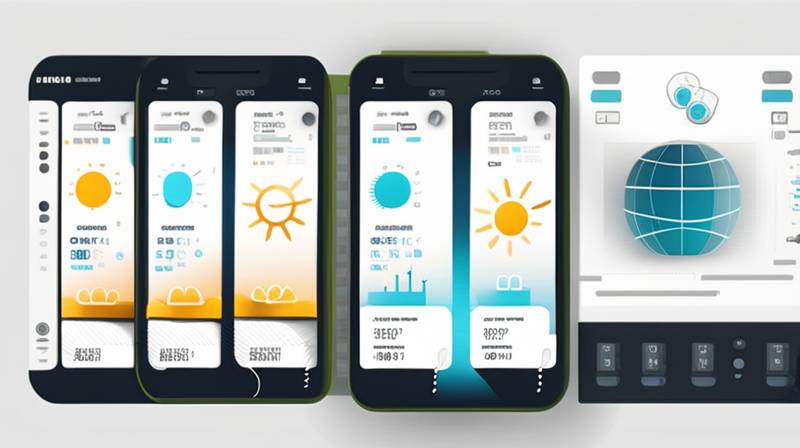
1. ENHANCED ENERGY EFFICIENCY: Photovoltaic systems contribute to increased energy efficiency within the electric grid. They help reduce the load on traditional energy sources by generating clean electricity from solar energy, thus easing demand during peak usage times.
2. GRID RELIABILITY: The integration of photovoltaics supports grid reliability through distributed generation. When solar arrays are installed on residential or commercial properties, they enhance the resilience of the grid against outages and fluctuations in energy supply.
3. ENVIRONMENTAL SUSTAINABILITY: This technology leads to environmental sustainability by reducing the carbon footprint of the energy sector. Solar power generation alleviates reliance on fossil fuels, resulting in lower greenhouse gas emissions.
4. ECONOMIC OPPORTUNITIES: The photovoltaic sector fosters new economic opportunities through job creation, boosting local economies while generating energy savings for consumers.
1. ENHANCED ENERGY EFFICIENCY
The integration of photovoltaic systems into the electric grid is fundamentally designed to optimize energy usage and enhance overall efficiency. By using renewable sunlight, these systems convert solar energy into electricity, providing an alternative to conventional fossil fuel-generated power. Through distributed generation capacity, solar power helps to flatten demand peaks during high consumption periods, thus reducing the strain on centralized power plants. This transformation is particularly beneficial during hot summer days when electricity demand for air conditioning surges.
Moreover, photovoltaic installations can significantly lower electricity costs for consumers by providing a reliable source of energy that reduces dependency on grid electricity. As homes and businesses increasingly adopt solar technology, the overall energy load on traditional sources diminishes, resulting in a more resilient grid. Increased efficiency not only implies reduced operational costs for utility companies but also enhances the longevity of existing infrastructure. Upgrading outdated systems to accommodate solar energy reduces waste and optimizes resource use, ultimately leading to a more sustainable energy future.
2. GRID RELIABILITY
A fundamental aspect of modern electric grids is their reliability, which significantly dictates the quality of service delivered to consumers. Photovoltaic systems present an innovative solution to enhancing grid reliability through their capacity for decentralized energy generation. Unlike traditional power plants that rely on centralized generation, solar installations can be positioned near the point of consumption. This strategic placement leads to shorter transmission distances and, as a result, diminished energy losses that typically occur during transmission over long distances.
Additionally, with the growing number of distributed solar generation sites, the grid becomes inherently more resilient against external shocks and demand fluctuations. For instance, during adverse weather events, localized solar production may continue even when main grid connections are compromised. This redundancy helps to maintain stable power supply levels, ensuring critical services remain operational during outages. The strategic management of solar power can easily adapt to local consumption patterns, providing utility operators with greater flexibility and control over power distribution.
3. ENVIRONMENTAL SUSTAINABILITY
Environmental sustainability stands as one of the most significant advantages offered by the integration of photovoltaic resources into power grids. Traditional energy generation heavily relies on the combustion of fossil fuels, which produces harmful emissions and contributes to climate change. In stark contrast, photovoltaic installations utilize a renewable resource—sunlight—that produces zero emissions during operation. This characteristic plays a pivotal role in the global effort to mitigate the impacts of climate change.
Moreover, as the adoption of solar power technology proliferates, it encourages the transition from nonrenewable to renewable energy sources. This shift results in significant reductions in greenhouse gas emissions, aligning with global sustainability goals. Furthermore, the life cycle of solar panels has been designed with eco-friendliness in mind; many manufacturers are now investing in recycling technologies that lessen waste and environmental impact. By advancing public policies that support solar adoption, municipalities contribute to creating healthier urban environments and cultivating public awareness about the importance of sustainable energy practices.
4. ECONOMIC OPPORTUNITIES
In addition to environmental benefits, the integration of photovoltaic systems into the electric grid opens up new economic pathways that offer significant advantages. The shift towards solar energy generation has led to substantial job creation across various sectors, including manufacturing, installation, maintenance, and sales of solar technologies. These jobs range from technical roles requiring specialized skills to opportunities in administrative and support capacities, facilitating overall economic growth at both local and national levels.
Moreover, as consumers adopt solar energy solutions, they experience direct financial benefits through reduced utility bills. In many regions, government incentives and rebates further lower the initial installation costs for solar systems, encouraging residential and commercial participation. With increasing public interest in renewable energy and the associated cost savings, the solar market is expanding rapidly. This expansion leads to increased competition, innovation, and technological advancements within the industry, positively contributing to the economy as a whole.
PHOTOVOLTAICS AND THE FUTURE OF ENERGY
With the ongoing advancements in photovoltaic technologies, their role in modernizing electric grids will only continue to evolve. The focus on efficiency, reliability, and sustainability reveals an opportunity for electric grids to transition from traditional models heavily reliant on fossil fuels towards a more decentralized and renewable-based approach. As energy demands rise and environmental concerns grow, the integration of photovoltaics is likely to play an increasingly pivotal role in ongoing discussions regarding energy production, sustainability, and economic development.
The marriage of photovoltaic systems and electric grid modernization heralds the dawn of more reliable, efficient, and sustainable energy solutions. Policymakers and entrepreneurs should continue to invest in research and development to ensure that the benefits of solar technology are maximized, ultimately leading to a cleaner, more resilient electricity network.
FREQUENTLY ASKED QUESTIONS
WHAT ADVANTAGES DO PHOTOVOLTAIC SYSTEMS OFFER FOR GRID MODERNIZATION?
Photovoltaic systems provide numerous benefits for grid modernization. Firstly, they enable enhanced energy efficiency by producing electricity at or near the point of consumption, thereby reducing transmission losses. Additionally, solar power contributes to grid resilience by diversifying energy sources, decreasing dependency on fossil fuels, and allowing for decentralized generation. This decentralization minimizes the impact of outages, allowing consumer access to power even during adverse weather conditions or emergencies. Moreover, photovoltaic systems can provide significant cost savings for consumers through reduced utility bills and potential incentives from governments aimed at promoting renewable energy. This dual focus on economic advantages and increased grid reliability helps build a stronger foundation for future energy systems.
HOW DOES INTEGRATING PHOTOVOLTAICS SUPPORT ENVIRONMENTAL GOALS?
Incorporating photovoltaic systems into the electric grid aligns with various environmental goals by significantly reducing carbon emissions associated with traditional energy generation methods. Solar energy is abundant and renewable, producing zero emissions during operation, thus decreasing the overall carbon footprint. Furthermore, widespread adoption of solar power contributes to the global transition away from fossil fuels, which are the leading contributors to climate change. As solar infrastructure development takes place, it stimulates investment in sustainable energy and encourages innovation in recycling and waste management for solar technologies. This harmonious relationship between solar energy production and environmental stewardship is critical for achieving long-term sustainability objectives—both on a national and global scale.
WHAT CHALLENGES DO PHOTOVOLTAIC SYSTEMS FACE IN GRID INTEGRATION?
While there are numerous benefits associated with the integration of photovoltaic systems into electric grids, several challenges arise that must be addressed to optimize their effectiveness. One of the primary issues is related to energy intermittency, as solar generation depends on sunlight availability, leading to variability in power output. This unpredictability necessitates the development of advanced energy storage solutions and a flexible grid infrastructure that can accommodate fluctuating levels of solar input. Additionally, regulatory and policy frameworks must adapt to support solar generation, ensuring fair compensation for produced energy and promoting equitable access to solar technologies. Addressing these challenges will be instrumental in maximizing the role of photovoltaic systems in grid modernization and fostering a sustainable energy future.
The marriage of photovoltaic technologies and electric grid modernization fosters a sustainable energy landscape that is resilient, efficient, and environmentally responsible. As nations continue to grapple with climate change and energy security, the role of photovoltaics will undoubtedly expand in pivotal ways. The transition towards reliable energy systems necessitates not just embracing solar technology, but also advancing it. From improving energy efficiency to enhancing grid reliability, photovoltaics offer a means to address various pressing energy challenges.
Furthermore, with their capacity to generate clean electricity and reduce dependency on fossil fuels, solar energy aligns perfectly with global sustainability goals. At the same time, the economic prospects within the solar sector will contribute to job creation and local economic growth, further strengthening communities. Government policies and public engagement are equally critical to fostering an enabling environment for solar adoption. Ultimately, a coordinated approach that embraces innovation, technology, and policy development will ensure that the integration of photovoltaic systems into electric grids is a success story of the renewable energy transition. The future of energy systems lies in sustainable practices, and photovoltaics stand at the forefront of this transformative journey, promising a brighter and greener tomorrow for generations to come.
Original article by NenPower, If reposted, please credit the source: https://nenpower.com/blog/how-photovoltaics-support-electric-grid-modernization/


